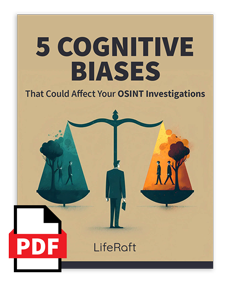Executive protection once meant hiring a few (highly trained) guys in suits on the ground, requiring a keen eye and a quick trigger finger.
But nowadays, protectors know their work is more about collecting and interpreting intelligence to keep the client safe. And much of that information is collected online.
As a result, open web sources, like forms, marketplaces, social media, have become key points for intel.
In this conversation, Liferaft OSINT analyst Kyle Baker discusses the role OSINT tools can play in executive protection. They also discuss some investigative tips and tricks you can apply yourself.
In this interview, you will learn:
- The number one personality traits of a savvy OSINT analyst.
- How to develop an OSINT skill set (even if you are a total beginner).
- Why OSINT tools make you better at your job.
- Social media monitoring 101: How to start a threat intelligence program from scratch.
- What you should know about doxxings.
- How your Amazon wish list can compromise your organization’s security.
- Why you’re struggling with alert fatigue (and how to beat it once and for all)
|
5 OSINT Investigation Mistakes You Don’t Know You’re Making We’re all ‘hard wired’ with cognitive biases to simplify complex decisions. But these mental heuristics can lead to faulty analysis, sabotaging OSINT investigations. In our free guide, we list the five most common cognitive biases that plague open-source analysts and outline practical strategies for how to deal with them. |
 |
